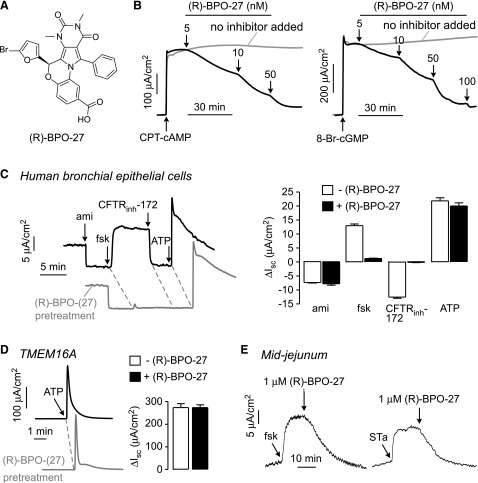Figure 1.
CFTR inhibition by (R)-BPO-27. A) Chemical structure of (R)-BPO-27. B) Short-circuit current in FRT cells expressing human wild-type CFTR showing responses to 100 μM CPT-cAMP (left) and 200 μM 8-Br-cGMP (right), with indicated concentrations of (R)-BPO-27 (representative of 3 experiments). C) Left: short-circuit in HBE cells in response to agonists and inhibitors that target key ion transport processes: 20 μM amiloride (ami), 20 μM forskolin (fsk), 10 μM CFTRinh-172, and 100 µM ATP. Experiments were done in the absence and presence of (R)-BPO-27 (10 μM, 10 min pretreatment). Right: data summary (means ± se; n = 3). D) Left: short-circuit current in TMEM16A-expressing FRT cells in response to 100 µM ATP. Experiments were done in the absence and presence of (R)-BPO-27 (10 μM, 5 min pretreatment). Right: data summary (means ± se; n = 3). E) Short-circuit current in mouse midjejunal strips showing responses to 20 µM forskolin (left), 10 μg/ml STa toxin (right), and 1 μM (R)-BPO-27 (representative of 3 experiments).

